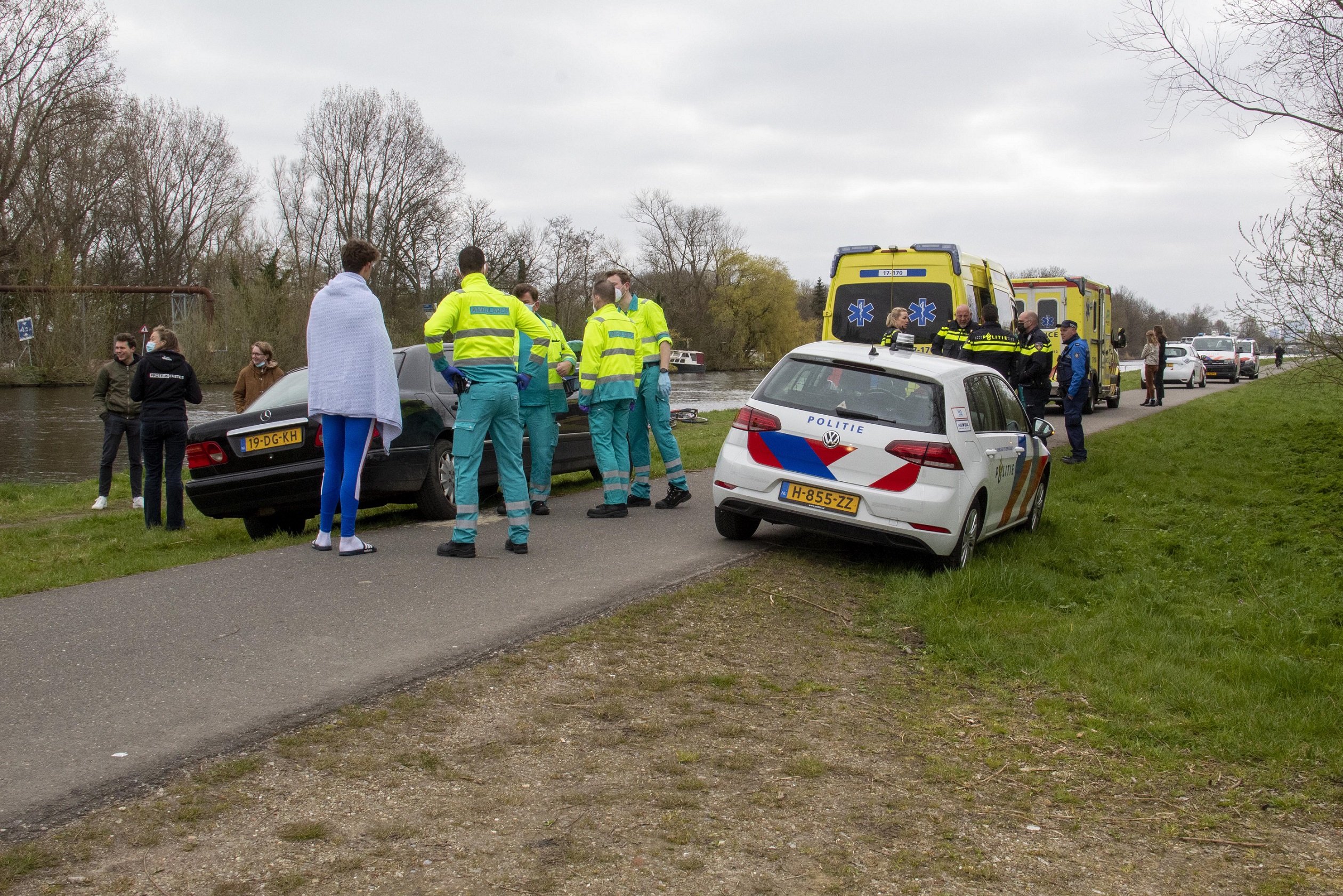Shocked rowers, a badly broken bone and slightly damaged boats – the consequences of a crash between two eights from Laga and Proteus. How did this happen?
Some rowers were brought to hospital for a check. (Photo: FlashphotoNL/District8)
The crash happened on Friday 2 April at about 11:30 in the morning on the Delftse Schie, in a bend close to the Hofwijk cemetery. “During the usual training, the boat speed is between 12 and 15 kilometres an hours,” says Job van Vliet. “They were training hard that morning.”
The President of D.S.R.V. Laga suspects that the rowers touched each other with their oars. “How this happened is still uncertain. They probably did not see each other clearly.”
“It is a confusing place,” says Chair Jill Oudshoorn of D.S.R. Proteus. “The coaches on the bank did warn them, but it was apparently too late.”
‘The accompanying coaches can warn the cox’
To be on the safe side, some of the rowers were brought to hospital for a check by the ambulances that arrived on the scene quickly. Van Vliet says that “It was luckily not that bad. They could all go home quickly. No concussions were diagnosed, though you never know if these emerge later.”
However, one Proteus rower did have a serious broken bone. “He could not be treated at the time and was sent home,” says Oudshoorn. “He is doing well under the circumstances.”
The damage to the boats is only a couple of damaged straps and a bent push rod. “It could have been worse,” says Van Vliet, “a new eight costs about EUR 40,000.”
He believes that the accident demonstrates how important it is that coxes know the area. “It also shows how important it is that there are always people who cycle parallel to the boats on the banks. The cox sits right at the back of the boat and can only see the rowers in front. The accompanying cycling coaches can warn the cox of any obstacles or approaching boats.”
The clubs are now in discussion to discuss how to avoid these sorts of accidents in the future. “The teams have a great understanding,” says Oudshoorn. “It is important to solve this jointly and not to point fingers at each other.”
Her club is also trying to find out more about the crash internally. “Then we can share the information with all the coxes and cycling coaches, thereby making the sport even safer.”
Jimmy Tigges / Redacteur Sport



Comments are closed.